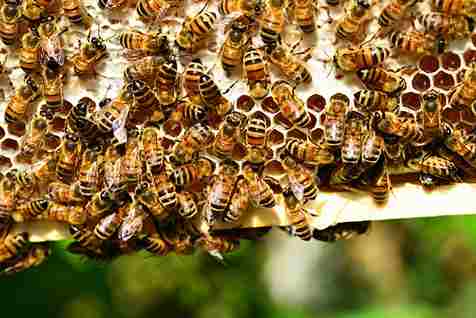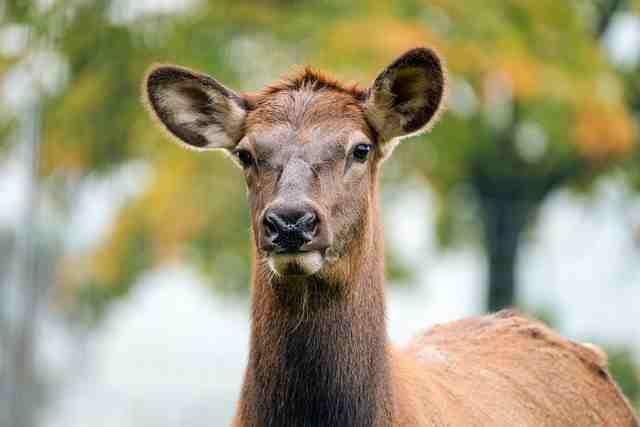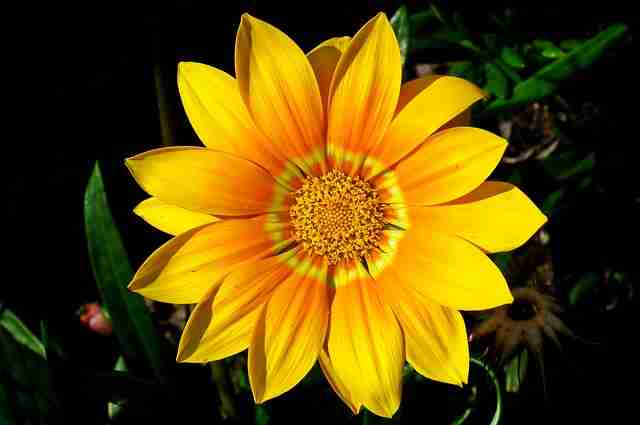Do Spiders Eat Caterpillars? (8 Facts To Know)
Spiders are well known for their ability to regenerate parts of their body. For instance, they can lose a limb and regrow it. Many of them release venoms with their bites.
When it comes to their diet, spiders are primarily carnivores and tend to feed on a host of insects. Since caterpillars also fall into this group (insects), it’s common to wonder if spiders also eat them.
Do Spiders Eat Caterpillars?
Yes, spiders do eat caterpillars, especially in the wild, but it’s not all species that eat spiders. For instance, wild spiders have venoms that they use to paralyze caterpillars as soon as they catch them. Garden spiders, in contrast, are not known to attack or eat caterpillars.

Why Do Spiders Eat Caterpillars?
Spiders generally don’t have a preference for caterpillars, however, they can be motivated to eat them based on several factors.
For instance, there are certain areas where caterpillars are in abundance. These include flower beds, hedgerows, nettles, shrubs, trees, and places with long grasses. Spiders in these areas are more likely to eat caterpillars, especially when they don’t find enough insects to eat.
In fact, in such areas, caterpillars may be more accessible and an easier prey than many flying insects.
Talking about their defense, caterpillars move very slowly, which makes them more vulnerable to attack from certain predators. In other words, they are not difficult prey for spiders.
In addition, caterpillars contain certain nutrients which can be beneficial to spiders. They are particularly rich in proteins, fiber, and fats, which are all required by arachnids for growth and daily dose of energy.
Read More: Do Spiders Feel Pain?
How Do Spiders Eat Caterpillars?
As earlier indicated, most spiders are carnivores and either trap prey or hunt them down. When it comes to caterpillars, they (spiders) typically inject them with digestive fluids, which liquifies their body, allowing them to suck them out of the webbing. Some wild spiders that eat caterpillars this way include cabbage loopers, black swallowtails, and tiger swallowtails.
While not every spider builds webs, every one of them produces silk.
Many spiders, such as orb-weavers, construct silk webs, which are used to capture flying insects. Since caterpillars don’t fly, they are not typically eaten by such spiders. Garden spiders also build webs near the ground to catch flying insects so they don’t eat caterpillars.
To make things more clearer, here are three categories of spiders and how they consume caterpillars:
- Hunting Spiders: Many spiders, like wolf spiders and jumping spiders, are active hunters. They stalk caterpillars, pounce on them, and use their venom to incapacitate them before eating them.
- Burrowing Spiders: Some spiders that dwell on the ground create burrows where they wait for prey to pass by. When a caterpillar comes too close, the spider strikes and injects venom to subdue it.
- Trap Spiders: Some spider species, like trapdoor spiders, create camouflaged burrows with hinged lids. When a caterpillar or other prey approaches the entrance, the spider ambushes and pulls it into the burrow, and then eats it.
- Web Spiders: As earlier indicated, species like orb-weavers spin elaborate webs to trap flying insects, including caterpillars. Once a caterpillar is caught in the web, the spider quickly immobilizes it with silk and delivers a venomous bite.
About Spider Venom
Many spider species have venomous glands, primarily situated in their chelicerae (fangs). When a spider captures a caterpillar, it injects venom through its fangs, paralyzing the prey. The venom serves a dual purpose: it immobilizes the caterpillar, making it easier to handle, and it begins the process of predigestion by breaking down internal tissues.
About Silk Production
After delivering a venomous bite, web-building spiders wrap their prey in webbing, which is usually made of silk. This silk paralyzes the caterpillar and keeps it from escaping until it’s eaten by the spider.
About Digestion
Once the caterpillar is paralyzed, the spider begins the process of external digestion. It regurgitates digestive enzymes onto the caterpillar, which liquefy the internal tissues. The spider then sucks up the nutrient-rich liquid through its mouth.
After sucking up the liquid, the spider consumes the remaining exoskeleton, which is often discarded after further wrapping.
What Species of Spiders Eat Caterpillars?
There are over 45,000 species of spiders known, and they are distributed across various habitats. The preference for caterpillars can vary among different species, depending on their habitat and the availability of other prey. It is impossible to list all species that eat spiders; however, I will attempt to list the more common ones.
- Garden Spider (Araneidae)
- Cross Orbweaver (Araneidae)
- Wolf Spiders (Lycosidae)
- Jumping Spiders (Salticidae)
- Crab Spiders (Thomisidae)
- Trapdoor Spiders (Ctenizidae)
- Sack Spiders (Clubionidae)
- Comb-Footed Spiders (Theridiidae)
- Green Lynx Spider (Peucetia viridans)
- Nephila Golden Orb-Weavers (Nephilidae)
- Funnel Web Spiders (Agelenidae)
What Caterpillars Are Safe for Spiders?
Some caterpillars contain toxins, which can be harmful when consumed by another animal. These include venomous caterpillars and poisonous caterpillars.
The main difference between poisonous caterpillars and venomous caterpillars is that the former can be harmful when it’s touched, breathed in, or consumed while the latter injects poison or toxins into its prey. This is usually done through a sting.
Toxicity is usually developed by feeding on poisonous plants such as milkweed, leaking acids, and forming chemical weapons.
Having said that, there are still very many caterpillars that are safe for spiders. Some of the more popular ones include:
- Codling moths
- Cabbage worms
- Cutworms
- Fall webworms
- Cabbage loopers
- Corn earworms
- Pickleworms
Should You Feed Caterpillars to Spiders?
If you keep spiders as pets, it’s not usually a good idea to feed them with caterpillars, even though it seems like a natural diet.
There are two main reasons why you shouldn’t do this. Some caterpillars are toxic and contain chemicals that can harm or even kill spiders.
Secondly, some caterpillars may carry pesticides, which can be transferred to your spiders when they eat them. If you found the caterpillar dead, especially in a garden, there’s a huge chance, it was killed by a pesticide.
Read More: Are Snails Decomposers?






